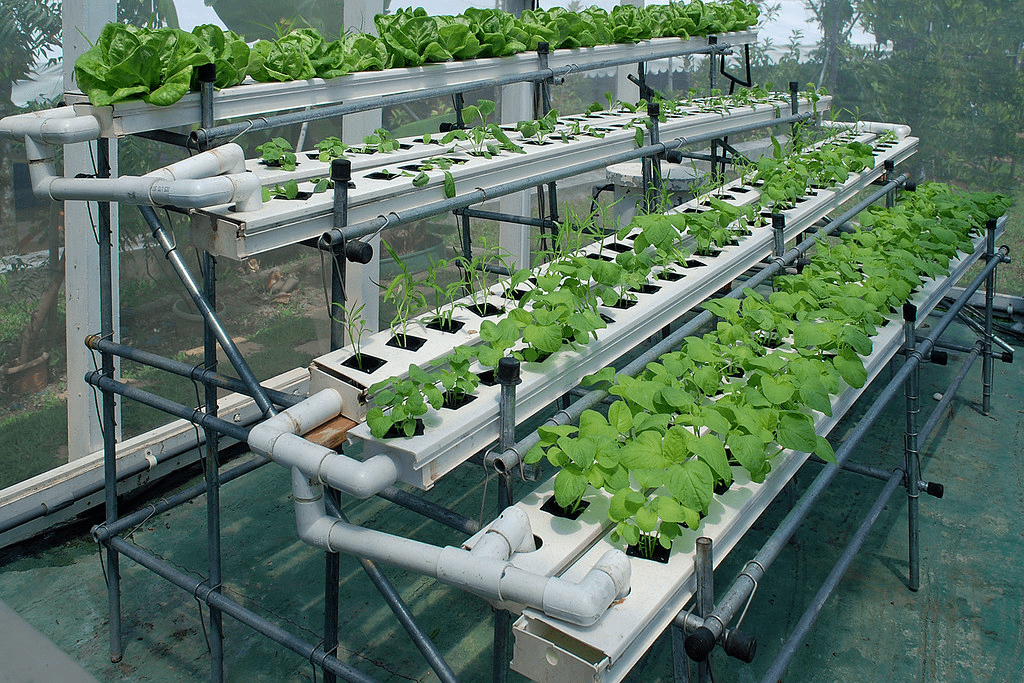Imagine having a gardening system that gives your plants the perfect balance of water and nutrients, ensuring their health and growth. That’s where the Ebb & Flow system comes in. This innovative technique, also known as the Flood and Drain system, offers gardeners an efficient way to cultivate their plants by periodically flooding the growing tray with water, allowing the roots to soak up the nourishment they need. In this article, we’ll take a closer look at the Ebb & Flow system, exploring how it works and the benefits it can bring to your gardening experience.
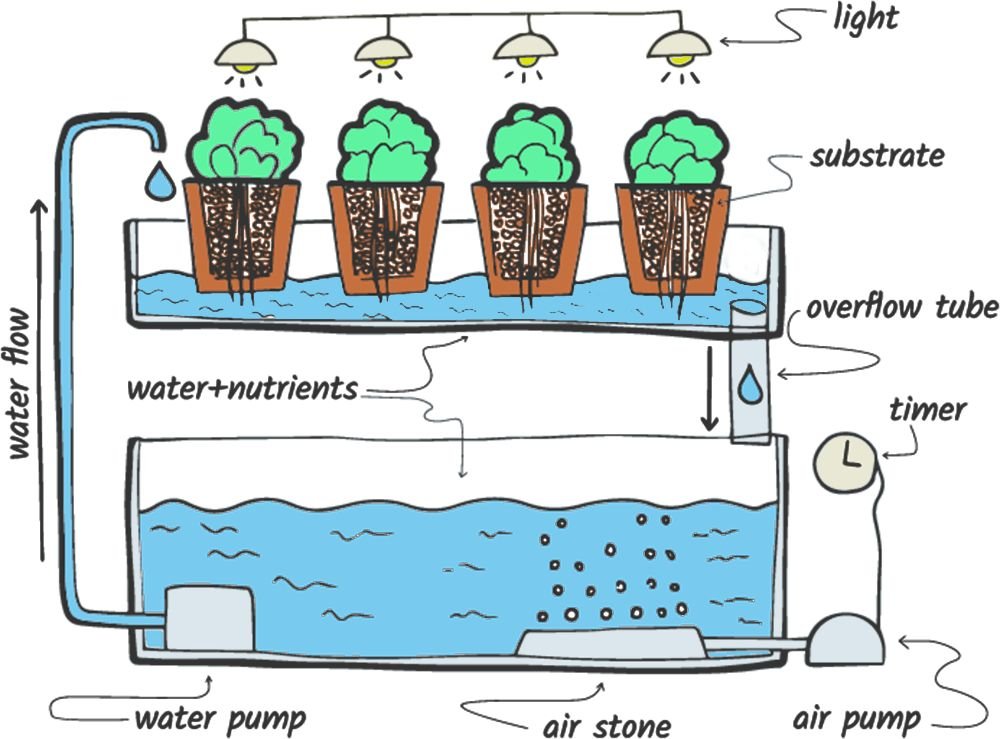
Overview of the Ebb & Flow System
Understanding what Ebb & Flow System is
The Ebb & Flow System, also known as the Flood and Drain System, is a popular hydroponic cultivation technique that allows for efficient plant growth. It operates by periodically flooding the grow bed with nutrient-rich water and then draining it away, providing plants with an optimal balance of moisture and nutrients. This system is widely used in indoor gardening, aquaponics, and urban agriculture due to its simplicity and effectiveness.
Applications and uses of the Ebb & Flow System
The Ebb & Flow System has a wide range of applications and is suitable for various plants, including herbs, vegetables, and flowers. It can be used in home gardens, commercial farms, and even educational settings. This technique is particularly beneficial for urban gardeners with limited space because it eliminates the need for traditional soil-based gardening. Additionally, the Ebb & Flow System is ideal for water-sensitive crops or those that prefer higher humidity levels.
The Mechanics of Ebb & Flow System
Basic operation of the system
The Ebb & Flow System operates using a reservoir, a grow bed, and a water pump. The reservoir holds the nutrient solution, while the grow bed is filled with a growing medium that supports the plants. The water pump is responsible for flooding the grow bed with the nutrient solution periodically.
Understanding the flood and drain cycle
The flood and drain cycle is the cornerstone of the Ebb & Flow System. It consists of two main phases: the flooding phase and the draining phase. During the flooding phase, the water pump is activated, filling the grow bed with nutrient-rich water. This flood phase ensures that the roots absorb the necessary nutrients. After a predetermined duration, the water pump is turned off, initiating the draining phase. The excess water is allowed to flow back into the reservoir, providing oxygen to the roots and preventing waterlogging.
Advantages of Using the Ebb & Flow System
Benefits for plant growth
The Ebb & Flow System offers numerous benefits for plant growth. Firstly, it provides a consistent supply of water and nutrients directly to the roots, ensuring optimal absorption and reducing the risk of nutrient deficiencies. Secondly, the flood and drain cycle mimics natural rainfall, stimulating root growth and nutrient uptake. Lastly, this system promotes efficient oxygenation of the root zone, preventing root rot and enhancing overall plant health.
Efficiency and resource saving aspects
One of the key advantages of the Ebb & Flow System is its efficiency in resource utilization. Unlike traditional soil-based gardening, this system conserves water by recycling it through the reservoir and preventing wastage. Additionally, the use of a growing medium instead of soil reduces the risk of pests and diseases, minimizing the need for chemical pesticides. Furthermore, the controlled environment of the system allows for year-round cultivation, maximizing productivity and reducing dependence on seasonal variations.
Setting Up an Ebb & Flow System
Required materials and tools
To set up an Ebb & Flow System, you will need the following materials and tools:
- Reservoir: A container that holds the nutrient solution.
- Grow bed: A container or tray filled with a growing medium.
- Water pump: To facilitate the flood and drain cycle.
- Timer: To automate the flooding and draining process.
- PVC pipes and fittings: For connecting the water pump and creating a drainage system.
- Water reservoir cover: To prevent evaporation and control light exposure.
- Growing media: Such as expanded clay pellets, coco coir, or rockwool cubes.
- Nutrient solution: A balanced mixture of essential plant nutrients.
Step by step guide on the setup process
- Select a suitable location for your Ebb & Flow System, ensuring it has access to electricity and water.
- Assemble the grow bed and position it securely.
- Set up the water pump and connect it to the reservoir using PVC pipes and fittings.
- Install the timer to control the flood and drain cycle, adjusting it according to your plant’s needs.
- Add the growing medium to the grow bed, ensuring it is evenly spread.
- Fill the reservoir with the appropriate nutrient solution, following the recommended dosage.
- Place the water reservoir cover to prevent evaporation and maintain optimal light conditions.
- Test the system by activating the water pump and verifying that the flood and drain cycle functions correctly.
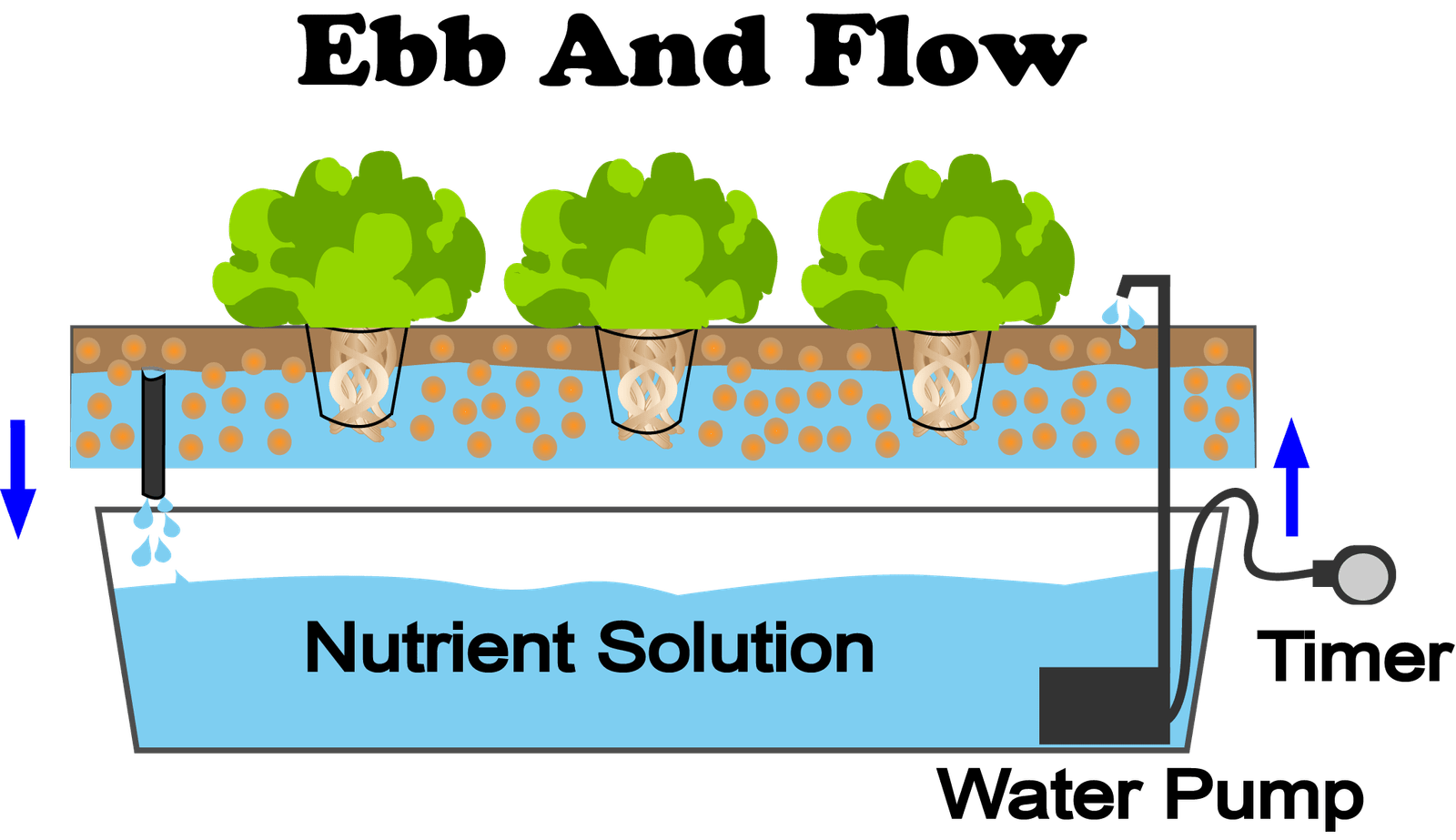
Understanding the Role of the Reservoir in the System
Functions of the reservoir
The reservoir plays a crucial role in the Ebb & Flow System. It acts as a storage container for the nutrient solution, providing a constant supply of water and essential plant nutrients. The reservoir also acts as a buffer, maintaining the pH and nutrient levels within the desired range. Additionally, the reservoir serves as a central point for monitoring and adjusting the system parameters, ensuring optimal plant growth.
How to maintain and clean the reservoir
Proper maintenance and cleanliness of the reservoir are essential for the success of the Ebb & Flow System. Regular monitoring of the nutrient solution’s pH and nutrient levels is crucial to maintain optimal plant health. It is recommended to clean the reservoir every two weeks to prevent the buildup of algae, bacteria, and mineral deposits. Use a mild bleach solution to sanitize the reservoir and rinse thoroughly before refilling with fresh nutrient solution.
The Importance of the Flood and Drain Cycle
How the cycle promotes plant growth
The flood and drain cycle in the Ebb & Flow System is vital for promoting plant growth. During the flooding phase, the nutrient-rich water saturates the growing medium, enabling the roots to absorb the necessary nutrients effectively. This process also eliminates air pockets, ensuring maximum contact between the roots and the nutrient solution. The draining phase allows excess water to flow away, preventing waterlogging and enabling the roots’ access to oxygen. This alternating cycle mirrors nature’s ebb and flow, enhancing root health and nutrient uptake.
Determining the appropriate cycle time
The appropriate cycle time for the flood and drain phase depends on various factors, such as plant type, stage of growth, and environmental conditions. As a general guideline, a cycle of 15-30 minutes of flooding followed by a 15-30 minute draining period is a good starting point. However, it is crucial to monitor the plants closely and adjust the cycle time based on their response. Plants that have a fast growth rate or high water requirements may benefit from more frequent flooding, whereas slower-growing plants may require less frequent cycles.
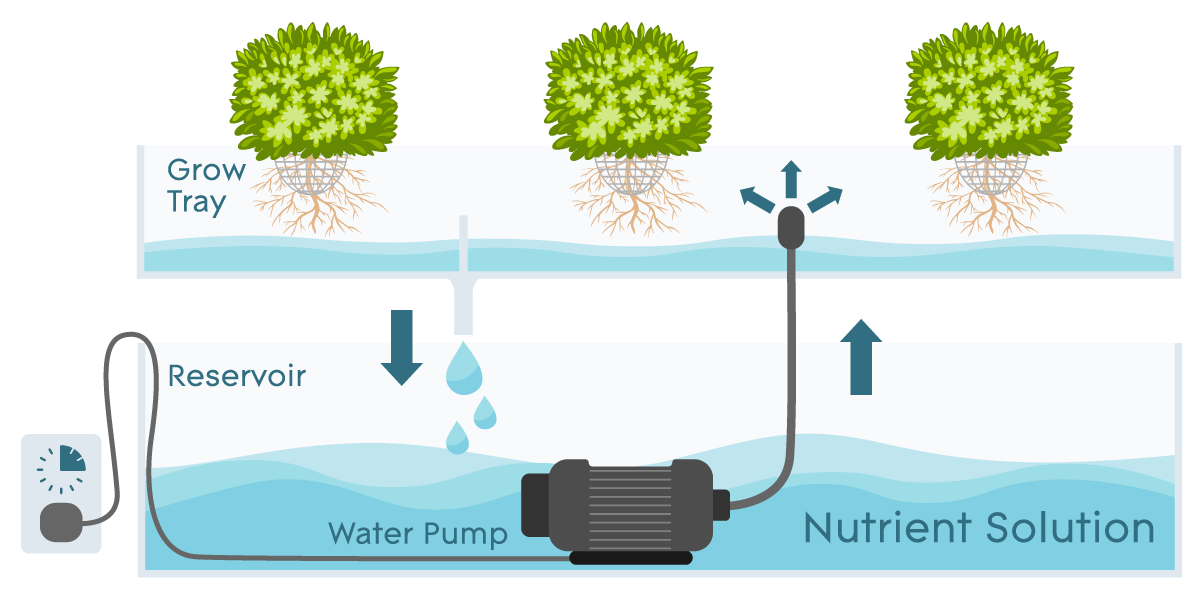
Understanding the Grow Bed in the Ebb & Flow System
Role and function of the grow bed
The grow bed is a fundamental component of the Ebb & Flow System, serving as the medium for plant growth. Its primary function is to provide support and anchorage for the plants’ roots. The grow bed also acts as a reservoir for the nutrient solution during the flooding phase, ensuring that the roots have direct access to water and nutrients. Additionally, the grow bed promotes proper drainage during the draining phase, preventing water accumulation and potential root rot.
Choosing the right grow media
Choosing the appropriate grow media is crucial for the success of the Ebb & Flow System. The ideal grow media should have good water retention capabilities, provide sufficient aeration to the roots, and be free from contaminants. Some commonly used grow media include expanded clay pellets, coco coir, rockwool cubes, and perlite. Each medium has its advantages and disadvantages, so it is essential to consider factors such as plant type, water retention requirements, and ease of use when selecting the grow media for your system.
Troubleshooting Common Issues in the Ebb & Flow System
Identifying potential problems
Despite its efficiency, the Ebb & Flow System can encounter a few common issues. Some potential problems include nutrient imbalances, clogged or malfunctioning pipes, root diseases, and pH fluctuations. It is crucial to regularly monitor the system for any signs of plant stress, wilting, or poor growth. Additionally, checking the water pump, drainage system, and reservoir for any blockages or leaks is essential in maintaining optimal system performance.
Solutions for common issues
Addressing common issues in the Ebb & Flow System requires a systematic approach. For nutrient imbalances, adjusting the nutrient solution’s concentration or pH can rectify the problem. Clearing any clogged pipes or replacing malfunctioning parts will address issues related to the system’s infrastructure. Treating root diseases promptly with appropriate fungicides or adjusting the pH will help restore root health. Regular monitoring and timely interventions will ensure the problems are identified and resolved before they impact plant growth.
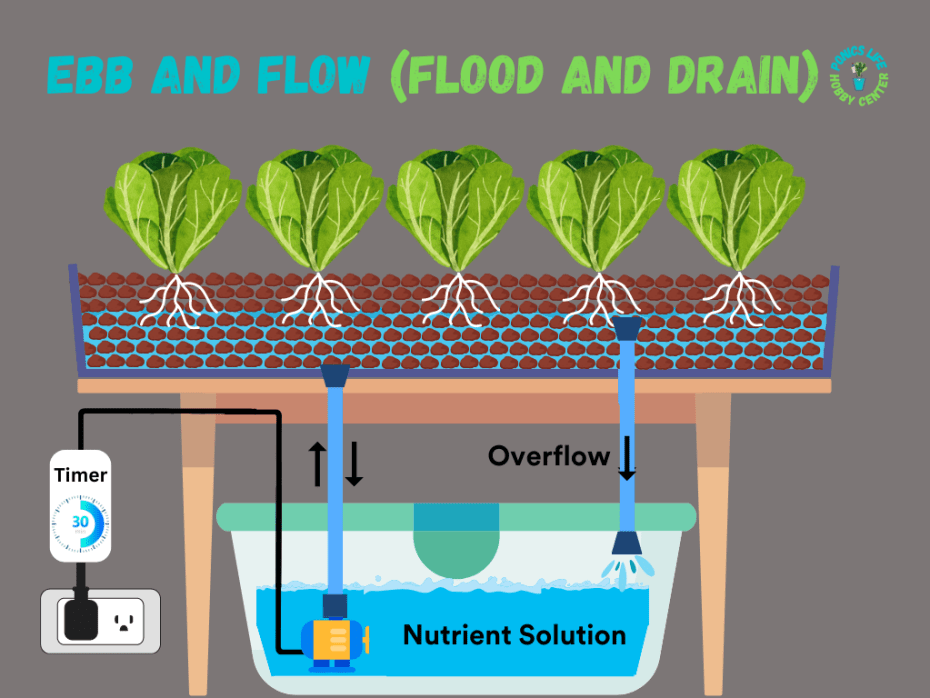
Advanced Techniques for Ebb & Flow System
Enhancing the system’s efficiency
Advanced techniques can further enhance the efficiency of the Ebb & Flow System. Employing recirculating systems that filter and reuse the nutrient solution reduces water and nutrient wastage. Implementing automated monitoring and control systems can optimize the flood and drain cycle, ensuring precise timing and nutrient delivery. Employing supplemental lighting and environmental control measures can extend the growing season and maximize plant growth. These advanced techniques enable fine-tuning of the system’s parameters and ultimately result in improved productivity and plant health.
Utilizing digital technology for better control
Digital technology offers exciting possibilities for improving control and monitoring in the Ebb & Flow System. Implementing sensors that measure temperature, humidity, and nutrient levels allows for real-time data collection and analysis. Integrating this data with computer algorithms enables automated adjustment of the system parameters, ensuring optimal growing conditions. Remote access and control through mobile applications further enhance convenience and ease of managing the system. Embracing digital technology allows for precise control, increased efficiency, and access to valuable insights for continuous system improvement.
Case Studies of Ebb & Flow System Application
Examples of successful Ebb & Flow system gardens
Numerous case studies showcase the effectiveness of the Ebb & Flow System in various settings. One example is a community garden in an urban area that utilizes this system to grow fresh produce year-round, despite limited space. Another case study involves a commercial hydroponic farm that incorporates the Ebb & Flow System for cultivating high-value crops, resulting in increased productivity and reduced water usage. These success stories highlight the versatility of the Ebb & Flow System and its potential to transform traditional agriculture practices.
Lessons learned from these case studies
The case studies provide valuable insights and lessons for implementing and optimizing the Ebb & Flow System. They emphasize the importance of proper system design and setup, as well as ongoing monitoring and maintenance. Factors such as selecting the right plants, fine-tuning the flood and drain cycle, and ensuring adequate nutrient balance are critical for achieving desired outcomes. Furthermore, the case studies highlight the need for continuous improvement, experimentation, and adaptation to maximize the system’s potential and overcome challenges.
In conclusion, the Ebb & Flow System, or the Flood and Drain System, offers an efficient and productive approach to hydroponic cultivation. By understanding the system’s mechanics, advantages, setup process, and troubleshooting techniques, you can successfully implement and maintain an Ebb & Flow System in various settings. Whether you are a hobbyist gardener or a commercial farmer, this system provides an opportunity to grow plants effectively, conserve resources, and explore innovative techniques for sustainable agriculture.
